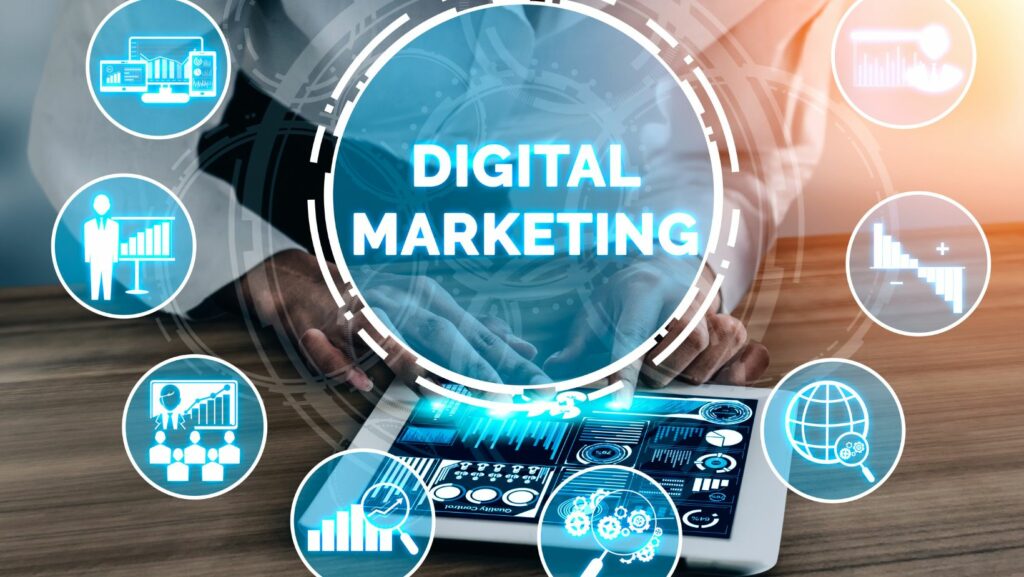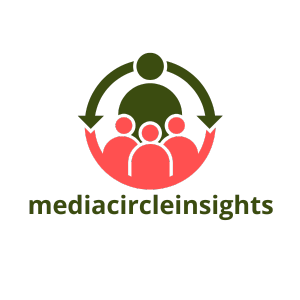Digital marketing and social media marketing often get used interchangeably, yet they represent distinct approaches to online promotion. While social media marketing focuses specifically on platforms like Facebook, Instagram, and Twitter, digital marketing encompasses a broader spectrum of online promotional activities.
Understanding the key differences between these two marketing strategies helps businesses make informed decisions about their promotional efforts. Digital marketing includes everything from email campaigns and search engine optimization to pay-per-click advertising and content marketing. Social media marketing, as a subset of digital marketing, concentrates on building brand awareness and engaging with audiences through social platforms.
Understanding Digital Marketing and Social Media Marketing
Digital marketing encompasses promotional activities across digital channels to reach target audiences online. These channels include search engines, websites, mobile apps, email marketing platforms, display advertising networks, content management systems, social media networks.
| Digital Marketing Components | Social Media Marketing Components |
|---|---|
| Search Engine Optimization | Profile Management |
| Content Marketing | Community Engagement |
| Email Marketing | Paid Social Advertising |
| PPC Advertising | Influencer Collaborations |
| Website Analytics | Social Listening |
| Mobile Marketing | Content Creation |
Social media marketing focuses exclusively on social networking platforms to build brand awareness, engage audiences and drive conversions. Popular platforms include:
- Facebook: Targets diverse demographics through paid ads and organic content
- Instagram: Emphasizes visual storytelling through photos, videos and Stories
- LinkedIn: Connects with professional audiences and B2B prospects
- Twitter: Enables real-time engagement through short-form content
- TikTok: Reaches younger audiences through short-form video content, often enhanced with an AI video maker for more dynamic and creative visuals.
- Pinterest: Drives traffic through visual inspiration boards
- Scope: Digital marketing covers all online channels while social media marketing targets social platforms
- Goals: Digital marketing drives website traffic and conversions while social media builds community engagement
- Content Types: Digital marketing uses diverse formats while social media focuses on platform-specific content
- Analytics: Digital marketing tracks website metrics while social media measures engagement metrics
- Investment: Digital marketing requires broader technical expertise while social media needs platform-specific knowledge
Key Differences Between Digital Marketing and Social Media Marketing

Digital marketing and social media marketing serve distinct purposes in the online marketing landscape, with clear differences in their approach, reach, and implementation strategies.
Scope and Channels
Digital marketing encompasses multiple online channels including search engines, websites, email, mobile apps and social media platforms. The scope extends to SEO optimization, PPC campaigns, content marketing, email newsletters and display advertising. Social media marketing focuses exclusively on social networking platforms like Facebook, Instagram, LinkedIn, Twitter and TikTok.
Target Audience Reach
Digital marketing reaches users across various online touchpoints and demographic segments. The audience targeting parameters include:
- Search intent-based targeting through keywords
- Geographic location targeting
- Behavioral targeting based on browsing history
- Device-specific targeting (mobile, desktop, tablet)
- Custom audience segments based on CRM data
Social media marketing targets users specifically within social platforms based on:
- Platform-specific demographics (age, gender, location)
- Interest-based targeting
- Social connections and interactions
- Group memberships
- Engagement with similar content
Marketing Goals and Objectives
Digital marketing aims to achieve broad business objectives:
| Digital Marketing Goals | Social Media Marketing Goals |
|---|---|
| Lead generation | Brand awareness |
| Website traffic | Community engagement |
| E-commerce sales | Social proof |
| Brand visibility | User-generated content |
| Marketing ROI | Audience relationships |
Digital marketing focuses on conversion-oriented metrics like click-through rates, conversion rates and ROI. Social media marketing prioritizes engagement metrics including likes, shares, comments and follower growth.
Benefits of Digital Marketing
Digital marketing provides comprehensive advantages for businesses across various online platforms. Its integrated approach creates multiple touchpoints for customer engagement and conversion optimization.
Multiple Marketing Channels
Digital marketing integrates diverse promotional channels into a unified strategy. These channels include:
- Email campaigns for targeted customer communication
- Search engine optimization for organic visibility
- Pay-per-click advertising for immediate traffic generation
- Content marketing through blogs, articles, videos, or engaging visuals created with an online animation maker
- Mobile marketing via apps SMS push notifications
Broader Market Reach
Digital marketing expands audience reach beyond geographical limitations. The reach includes:
- Global accessibility through search engines
- 24/7 content availability for different time zones
- Cross-device optimization for desktop mobile tablet users
- Demographic targeting across age income location
- Customized messaging for different market segments
- Real-time conversion tracking
- Customer journey mapping
- A/B testing for campaign optimization
- ROI measurement for each channel
- Behavioral analytics for audience insights
| Metric Type | Tracking Capability | Business Impact |
|---|---|---|
| Conversion | Transaction tracking | Revenue measurement |
| Engagement | Time on site clicks | User interest analysis |
| Reach | Impression views | Brand awareness assessment |
| ROI | Cost per acquisition | Budget optimization |
Advantages of Social Media Marketing
Social media marketing offers distinct advantages that empower businesses to connect with their target audience effectively on platforms like Instagram Facebook LinkedIn Twitter. These platforms create unique opportunities for brand growth through organic engagement strategic content distribution.
Direct Customer Engagement
Social media platforms enable real-time interaction between brands customers through comments direct messages polls surveys. Businesses receive immediate feedback about products services through user comments reviews generating valuable insights for product development customer service improvements. The two-way communication builds authentic relationships with followers establishing brand loyalty increasing customer lifetime value.
Real-Time Brand Building
Social platforms provide instant visibility for brand messaging content updates reaching audiences within seconds of posting. Companies share behind-the-scenes content employee spotlights company culture posts strengthening brand personality authenticity. Platform algorithms amplify engaging content organically expanding reach through shares saves reactions:
- Story features highlight time-sensitive promotions
- Live streaming capabilities showcase events product launches
- Visual content tools enhance brand storytelling
- User-generated content increases social proof credibility
Cost-Effective Campaign Management
Social media marketing delivers measurable results at lower costs compared to traditional advertising channels:
| Platform Feature | Cost Benefit |
|---|---|
| Organic Posting | $0 base cost |
| Targeted Ads | Starting at $5/day |
| Analytics Tools | Included free |
| A/B Testing | Built-in functionality |
The platforms’ built-in targeting options optimize ad spend by reaching specific demographics interests behaviors locations. Campaign adjustments happen instantly allowing businesses to redirect budgets toward top-performing content maximizing ROI.
Choosing the Right Strategy for Your Business
Selecting between digital marketing and social media marketing requires a strategic evaluation of business resources, objectives and target audience characteristics. A data-driven approach helps determine the most effective marketing mix for maximizing ROI.
Budget Considerations
Marketing budget allocation impacts strategy selection based on available resources and expected returns:
| Marketing Type | Initial Investment | Maintenance Cost | Average ROI |
|---|---|---|---|
| Digital Marketing | $2,000-$10,000 | $1,000-$5,000/month | 122% |
| Social Media Marketing | $400-$2,000 | $400-$2,000/month | 95% |
Key budget factors include:
- Platform costs: Website development vs social media profile setup
- Content creation expenses: Professional content vs in-house social posts
- Advertising fees: PPC campaign minimums vs social media ad spending
- Tools and analytics: Marketing automation software vs social management platforms
- Team resources: Digital marketing specialists vs social media managers
Business Goals and Industry
Industry characteristics and business objectives guide marketing strategy selection:
B2B Companies:
- Digital marketing emphasis on lead generation through SEO
- LinkedIn-focused social media presence
- Email marketing for nurturing professional relationships
- Content marketing for thought leadership
B2C Companies:
- Social media focus on Instagram and Facebook
- Visual content creation for product showcasing
- Community engagement through social platforms
- Influencer partnerships for brand awareness
E-commerce:
- Combined approach with digital advertising
- Product-focused social media content
- Shopping integrations across platforms
- Retargeting campaigns through both channels
- Content marketing for expertise demonstration
- Professional networking on LinkedIn
- Educational content distribution
- Case study sharing across channels
Integration of Both Marketing Approaches
Digital marketing and social media marketing create a synergistic effect when implemented together. Cross-channel integration enables businesses to leverage the strengths of both approaches while minimizing their individual limitations.
Cross-Platform Strategy Development
A unified marketing strategy incorporates digital marketing’s broad reach with social media’s engagement capabilities. Cross-platform campaigns include:
- Search engine optimization enhanced by social signals
- Email campaigns featuring social proof elements
- Content repurposed across websites blogs social platforms
- Retargeting ads using social media audience data
Data Integration and Analytics
Combined analytics from digital and social channels provide comprehensive insights:
| Metric Type | Digital Marketing Data | Social Media Data | Integrated Benefits |
|---|---|---|---|
| Engagement | Website behavior | Social interactions | Complete user journey |
| Conversion | Sales transactions | Social commerce | Multi-touch attribution |
| Reach | Website traffic | Platform followers | Total audience size |
| ROI | Channel performance | Campaign engagement | Holistic campaign value |
Unified Content Distribution
Content distribution across integrated channels maximizes impact:
- Blog posts shared through social channels
- Social media content embedded in website pages
- Landing pages optimized for social traffic
- User-generated content featured in email campaigns
Automated Marketing Systems
Marketing automation platforms connect digital social channels:
- Triggered email campaigns based on social interactions
- Social media posting scheduled with website content updates
- Customer relationship management integrated with social profiles
- Cross-channel remarketing based on combined user data
- Combined attribution modeling
- Cross-channel conversion tracking
- Unified customer journey mapping
- Consolidated ROI reporting
Conclusion
Both digital marketing and social media marketing play vital roles in today’s business landscape but serve different purposes. Digital marketing offers a broader approach encompassing multiple online channels while social media marketing excels at building direct relationships with audiences through specific platforms.
The choice between these strategies depends on various factors including business goals industry type and available resources. Many successful businesses implement both approaches creating a powerful synergy that maximizes their online presence and customer engagement.
Understanding these distinctions helps organizations make informed decisions about their marketing investments and create more effective campaigns that drive meaningful results. Whether focusing on one strategy or combining both the key lies in aligning marketing efforts with business objectives and target audience behaviors.




